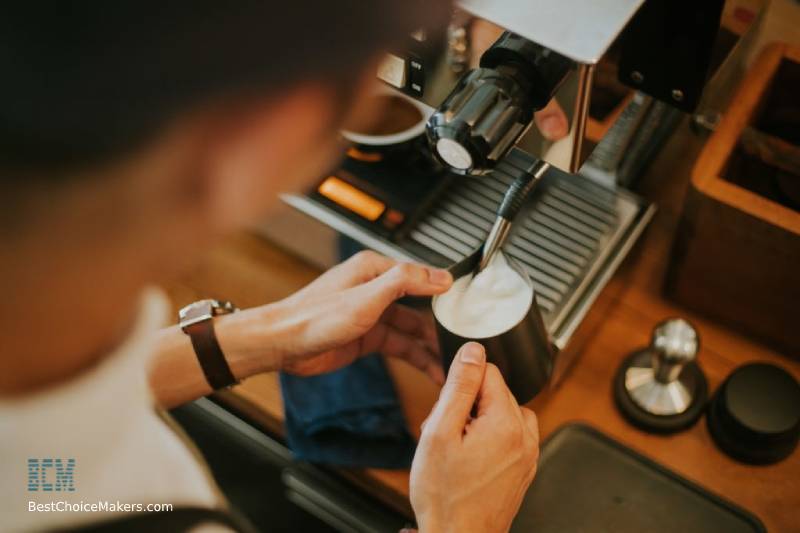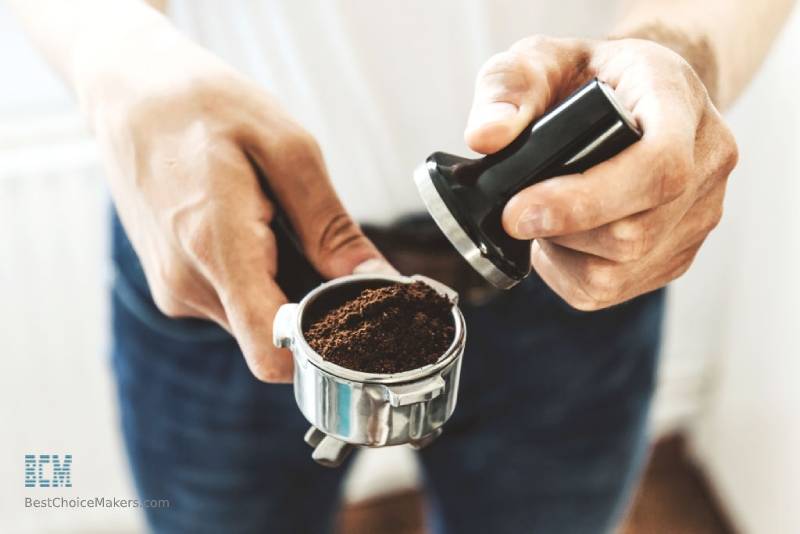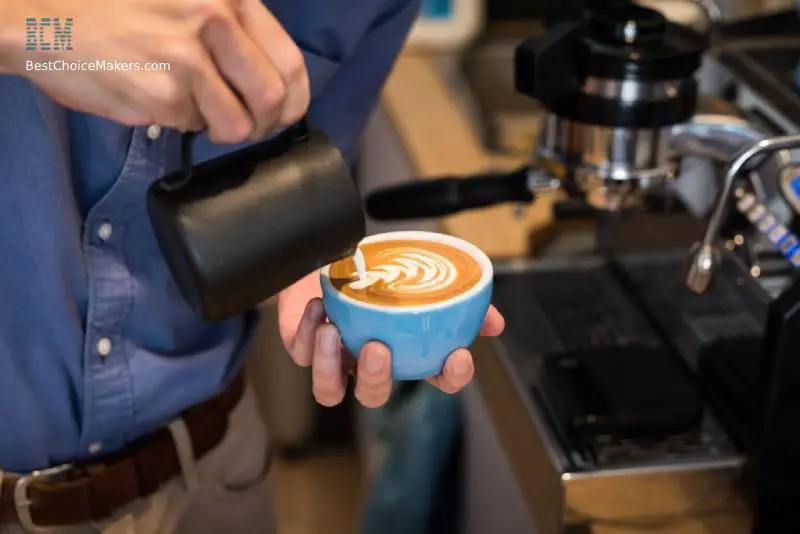
After getting the best espresso machine for your home, treating yourself to a fancy latte every now and then will become a regular thing.
Of course, you need to know the recipe for making it at home. Some basic guidelines on using the espresso machine are also necessary. Enjoying the perfect flavor combination of frothed milk and a strong espresso shot is just two steps away.
So, let’s find out today how to make a latte with an espresso machine following a simple baristas recipe.
Making a Latte with an Espresso Machine
The traditional latte recipe will need just a few ingredients that are easily available at home almost all time. To learn how to make a latte at home, you also need to use your creative side, just like how café baristas do. At the same time, you must avoid getting in a rush with this process.
From coffee ground preparation to pouring milk at the end, everything needs your time and patience. Especially if you want to make it a cup worthy of having a place on your Instagram Feed. Keep on Reading…
Preparing the Coffee Beans
To make espresso neatly, you need very finely ground coffee. Quite similar to the grain size of table salt. Once you have ground them in the right size, they should stick to each other and clump as well. The grounds of this size are also risk-free of any mess later on. Once you start becoming more used to this process, exploring and experimenting with grind will make more sense. You can play with the grind size to get a certain sort of taste.
To have full control and maintain freshness there’s no alternative to using a burr grinder. So, you need to use one for the espresso bean preparation. The machine helps in getting the exact fineness and coarseness that you want. Remember that the espresso is often acidic. And this usually results from too much pressure while extraction takes place. Another reason is using older beans. If you don’t prefer the acidic taste then use newer beans here.
The Choice of Milk Matters
Now let’s focus on the milk you’ll use for this process. For every one small cup of latte, you need around 6-ounces of milk. Another easy way to keep on track is by using 6-ounces of milk for each ounce of brewed espresso. You can choose from nonfat, two percent, and whole milk. Nonfat milk helps to make foam in less time and effort. But the taste lacks decadent flavor.
If you want to have creaminess then use two-percent milk for this process. The most difficult type to make foam with is whole milk. But then again, the richest flavor also comes from using whole milk. The high-fat content in full-fat milk really boosts the flavor.
Steam Milk & Make it Foamy
Adding the milk steamed with bubbles makes your espresso less strong and more relieving to tastebuds. This does wonder for people who like to have coffee sip after sip. The finesses of espresso become ten times better with steamed milk that includes microform bubbles in it.
You’ll need a moral pitch for steaming the milk. Simply pour your chosen milk of the desired amount in it. Then the steam wand needs to go inside milk diagonally. Let it rest just below the surface. By doing so, you’ll allow the air to get mixed with the steam and a nice froth will start forming for a delicious latte look.
Turn the necessary knob on your espresso machine to open the steam hatch. Usually, you need to twist a dial available on the machine. Then let the steam milk reach somewhere between 150 to 155 Fahrenheit temperature. You can use a thermometer for calculating this. At any cost, this temperature should not go beyond 170-degrees Fahrenheit. Or else there’s a good chance of scorching happening.
Instead of the soap-like, huge bubbles, you should try making light and tiny ones. The body should not be compromised and there should be enough lightness. Aim for this concept for your foams.
Adding Ground Coffee
A certain amount of coffee needs to be there for each espresso shot. Usually for lattes, people like using a double shot of espresso. This means you need two shots here. You can use somewhere between 18 to 21 grams of ground coffee for each espresso shot.
Just bring the portafilter of your espresso machine on a kitchen scale to measure properly. Start by zeroing the machine using an empty portafilter. Then gradually add the coffee grounds until you reach the desired amount.
Coffee Tamping Next
Time for you to compress the ground espresso using the tamper of your espresso machine. With a little handle included on the top, it’s quite light in weight. Tamp the handle using your fingers. And then let your forearm, elbow, and hand directly rest on top of the portafilter. Give it a push downwards.
Try to tamp it down with a twisting like motion. The ideal tamp weight is around 30 lbs. You can use a kitchen scale for getting an idea of how much pressure you’re using on the portafilter. Through this process, you should end up with a puck of coffee. Consistent, even compression will ensure a perfect brew of espresso, so this part is very important.
Time for The Espresso Shots
The espresso machine will have a brew head. You need to lock the portafilter on the brew head. Then find the brewing button on your espresso machine. This will trigger the shot-making process.
The color of a perfect shot is between medium to dark brown. The body is minimum with a tiny cream or foam amount on the surface. Depending on your grind and machine, the shot brewing time will vary. But for most of the cases, it’s around 20-30 seconds.
You don’t want to go longer than 30 seconds and brew the espresso with too much bitterness. Similarly, if the brewing isn’t done for a long enough time then there will be a lack of flavor. You need to determine the brewing period depending on your taste.
Pour Your Prepared Milk
Time to pour the steamed milk into your espresso next. With the froth pouring smoothly, your espresso cream should get nicely blended. If you are not sure about controlling the flow while pouring, use a spoon.
Also, start the pouring at least a quarter inch above your drink. The thin frothy top should be resting nicely on your creamy brown drink base. And now you can experiment with some latte art to make it even more appealing. The latte art is of course, completely optional, but it does add a great touch to the presentation.
Wrap Up
So that was how to make a latte with an espresso machine. Hopefully, now you know that it is not important to be an expert barista for making yourself a beautiful latte drink. Just a little bit of attention on frothing the milk and being generous with brewing coffee is all it takes.
A well-made latte is no less than warm hugs in winter. The sweety silky feel with rich coffee goodness can instantly get rid of your tiredness. And the best part, you don’t have to visit a local coffee shop and buy a costly cup of latte anymore.



